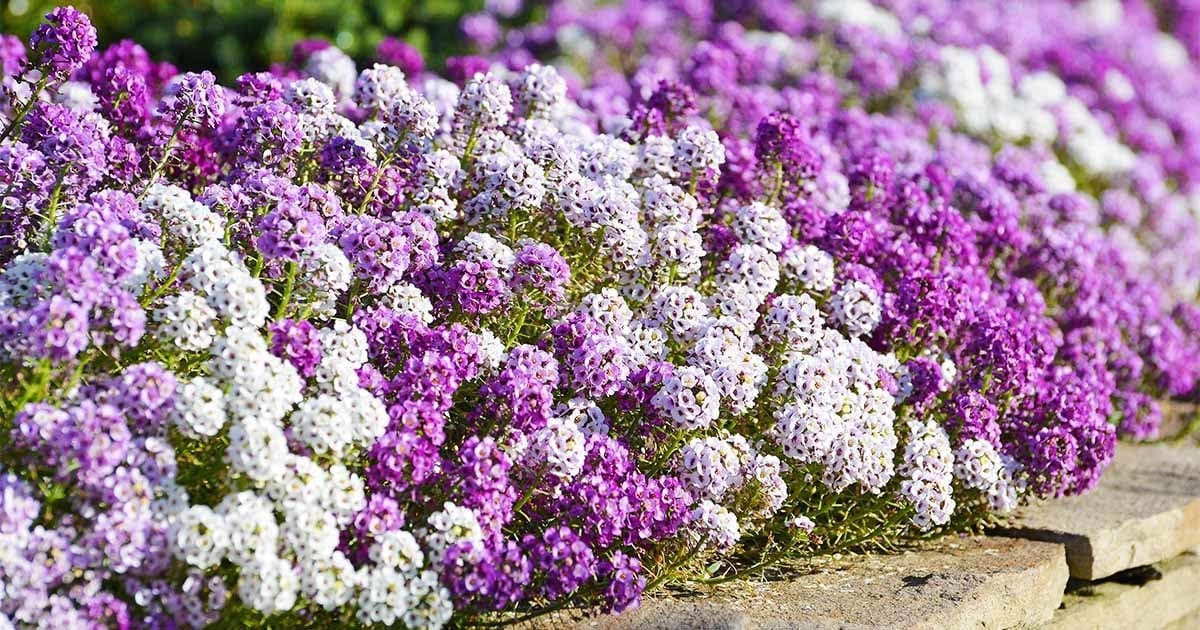Table of Contents
If you are in search of a lovely, low-maintenance flowering plant to add to your garden, then you must definitely consider Sweet Alyssum. Because of its fragrance and exquisite blooms, gardeners love this gorgeous shrub.
It’s a versatile addition to any yard or landscape as it’s easy to cultivate and is available in an array of colour shades and sizes. The leaves are oval-shaped and arranged in a rosette around the stem. Sweet alyssum is native to the Mediterranean region but has been introduced to other parts of the world, including the United Kingdom.
With the right care, sweet alyssum can bloom during the growing season, adding beauty to any garden. Below are some important advice for growing and caring for sweet alyssum plants listed to help you while adding this beauty to your garden.
When to Plant Sweet Alyssum
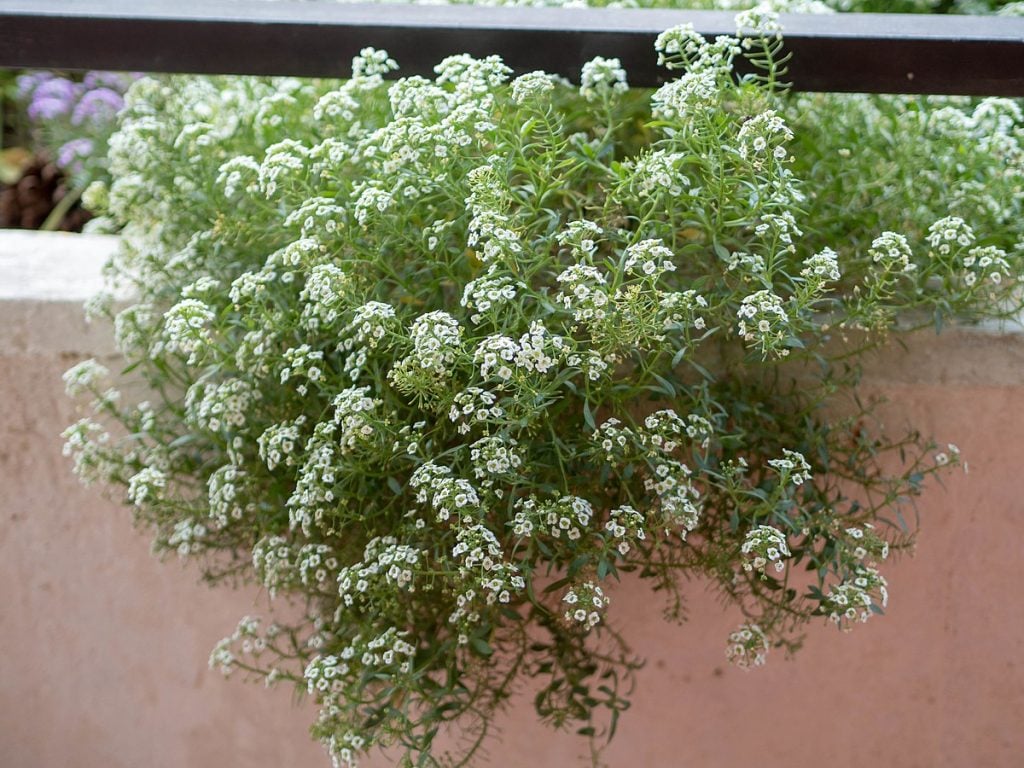
It is possible to cultivate the sweet alyssum, an annual plant with a cool growing season, in both spring and autumn. It can directly be sown outside after the spring’s last frost date. The seeds can also be started indoors around 6-8 weeks prior to the last day of frost in cold climates, followed by this the seedlings should then be transplanted outdoors once the weather is a bit warm. For a fall crop, you can plant the seeds outdoors in late summer, 6-8 weeks before the first anticipated frost and then cultivate them during winter.
How to Plant and Grow Sweet Alyssum
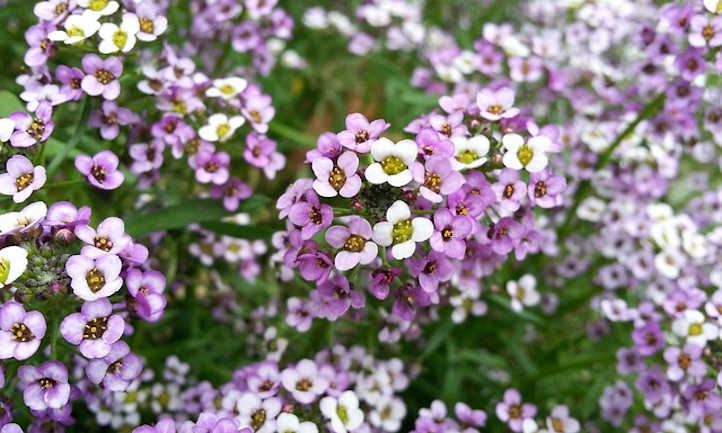
Although sweet alyssum plants can handle little shadow, you need to choose a spot that is full of light. It needs well-drained soil with average moisture levels to grow. To begin with, prepare the soil by weeding, adding organic fertilisers and pulling out obstacles, if any. Next, check the drainage in your soil by digging a hole and filling it with water before transplanting the seedlings. If your soil doesn’t drain, then use compost, leaf litter, and grit, such as sand, to make the soil more porous. Once you have prepared the soil, evenly spread out the seeds on the top of the soil and lightly press them to ensure they are in contact with the soil and are exposed to light. Until germination, which typically takes 15-20 days, keep the soil damp; water them only when the soil seems dry.
Where to Plant Sweet Alyssum
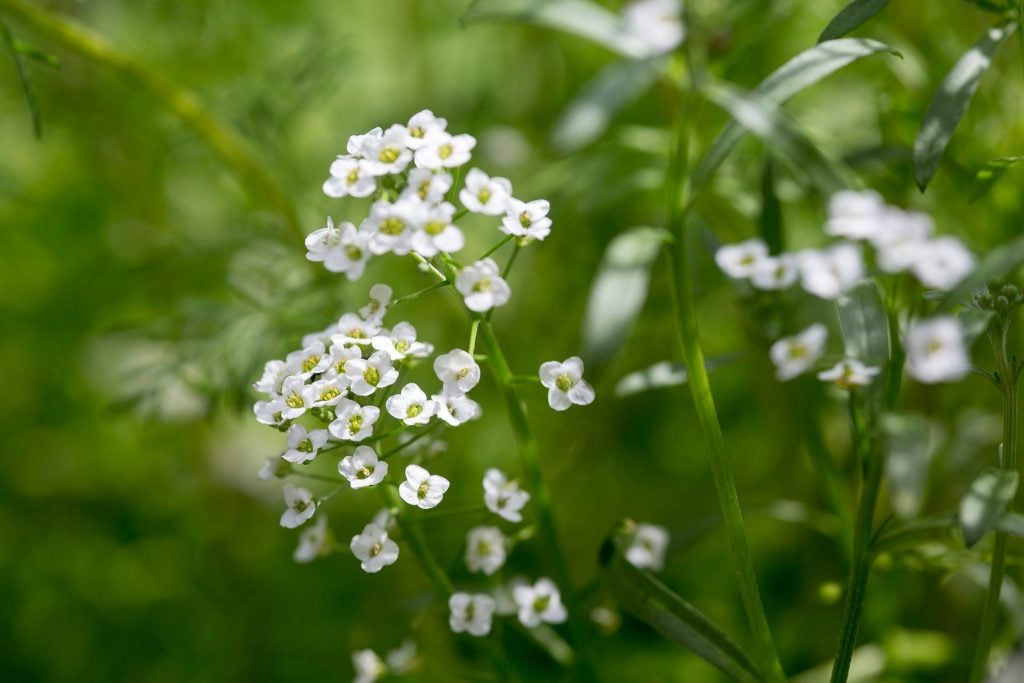
Before planting sweet alyssum, ensure that the soil is fertile and well-drained and that the spot where you are going to plant it has full sun and moderate shade. You can either directly sow sweet alyssum in the ground or start it indoors and move it outside later. You can grow sweet alyssum in varied places like:
- Sweet Alyssum works really well as a border plant, as an edging plant and to fill in the spaces.
- They even thrive in containers, like hanging baskets, window boxes and compact settings.
- Its low growing and spreading nature make it an excellent choice for rock gardens too.
- You can plant them in spaces between stepping stones and pavers and create a fragrant ground cover.
Proper Soil and Sunlight for Sweet Alyssum’s Growth
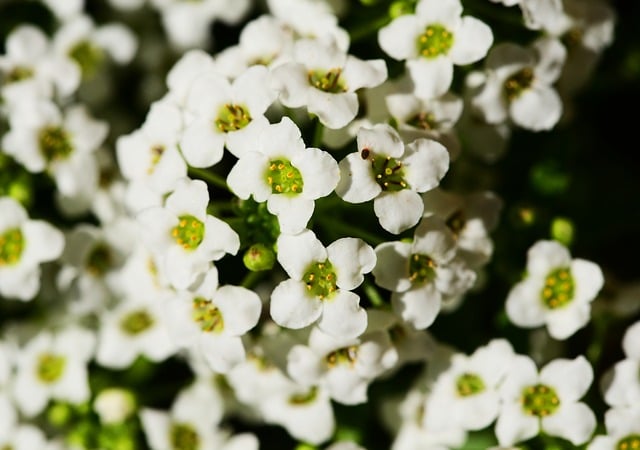
Sweet Alyssum requires both soil and sunlight to grow. Though sweet alyssum is adaptable to varied soil and light conditions, it favours sandy soil with good drainage, which has a pH of 6.0 to 7.0 and is slightly acidic to neutral. It even prefers exposure to mild to full sun. If the plant receives too much shade, it will become leggy and bear very few flowers. It’s crucial that you maintain moist soil throughout the growing season.
Adequate Water And Fertilisation for the Plant
Any plant, including sweet alyssum, needs water and fertiliser to survive. Here are some points you must keep in mind-
- Water them frequently during summer. Prevent the soil from drying out completely, as this can stress the plant.
- Use a balanced liquid fertiliser and fertilise them every few weeks. As a result, it will become more robust and healthy.
- Check the moisture level and make adjustments if you notice that your plant has begun to turn yellow or wilt. This can, however, be seen in plants which are drought-stressed.
- While watering the plants, try to keep the water off the leaves since this can lead to fungus and illness.
- If you come across any insects or diseases damaging your plant, seek assistance from any nearby garden centre.
- You can even pluck off the top growth of your sweet alyssum to promote bushier growth if it gets too tall or if it starts to look lanky.
- Regularly deadhead the wasted flowers to extend its flowering season.
Pruning And Maintenance
Taking care of sweet alyssum requires regular maintenance and pruning. To promote new growth and maintain their finest appearance, you need to clip them off frequently. Start by trimming back any lanky or dead stems on your plant. After that, prune it until it is just 6 inches tall. Make sure to cut an angle so that water can drain away from the plant. After your sweet alyssum is cut, it is necessary for you to fertilise it. Use a balanced fertiliser that has been designed with flowering plants in mind. Do follow the instructions on the fertiliser packaging while using it.
Deadheading your sweet alyssum plant on a regular basis is also important. Deadheading is a process of taking the plant’s spent blossoms off. This thereby encourages the plant to grow more blooms. To deadhead, all you need to do is just remove the wasted flowers from the base with a pair of sharp scissors for gardening shears.
Last, but not least, remember to water your lovelies frequently. Make sure that the soil doesn’t entirely dry out in between watering because they require evenly moist soil. While watering, avoid wetting the foliage; instead, water them thoroughly. If you give them the right attention and care, these will yield an abundance of gorgeous blooms.
Types of Sweet Alyssum
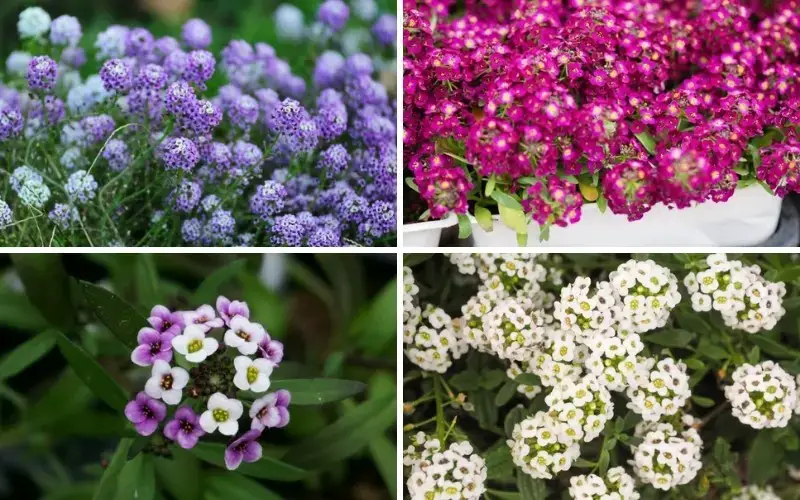
Sweet Alyssum, small, fragrant flowers with minimal maintenance, are favoured options for many gardeners. They are available in many varieties.
- Clear crystal Lavender shades: These blooms are larger than the typical lavender we see around and grow 10 inches tall and 14 inches wide.
- Easter Bonnet: These come in a mix of soft pink, lavender, and white blooms. They grow 4 inches tall.
- Frosty Knight: Beautiful variety comes in white blooms and cream-edged green leaves.
- Snow Crystals: Extra large fragrant flowers that bloom on various plants.
- Snow Princess: Heat-tolerant fragrant white flowers which are larger than older varieties. They can grow 6 inches tall but can trail to 5 feet.
Common Pests Affecting Sweet Alyssum
Plants of sweet alyssum are rarely harmed by pests or illnesses. Their leaves may turn yellow and curl from aphids feeding on them. Spray plants with a pesticide if the infestation is bad. Observe these pests and get rid of them by hand if you can because snugs and snails can also harm plants. These plants are occasionally prone to powdery mildew, particularly in humid environments. The leaves might become yellow and die from this illness, which causes white powdery patches on them. Apply a fungicide to the affected plants. These plants can even become lanky and feeble if they receive excessive amounts of fertiliser. Therefore, avoid watering and apply fertiliser carefully.
Tips For Healthy And Sweet Alyssum Plant
- Fertilise once a month with a balanced fertiliser.
- Provide sunlight, but avoid direct sunlight.
- Pinch back spent blooms to encourage new growth.
- Protect plants from strong winds, cold temperatures and slugs.
- Rotate them in the garden every few weeks to ensure even growth.
- Remove dead leaves to prevent the spread of disease.
Start Planting Alyssum!
By this time, you are well aware of the sweet alyssum plants. What are its types, how, when, and where can they be grown etc? We have covered everything. A low-maintenance easy-to-grow plant that can give a lovely touch to any garden is sweet alyssum.
Don’t forget to deadhead the wasted blooms and prune the plant to maintain a neat appearance and promote flourishing growth. Your plants will continue to appear lush and healthy if you fertilise them every few weeks with a balanced fertiliser. If pests become a problem, then either an organic or chemical pesticide may be required to treat them. Overall sweet alyssum is a fantastic plant for any garden and will add a stunning splash of colours to any setting. If nurtured with proper love and care, this plant will yield beautiful flowers for years to come.
So, what are you still holding out for? Go out and start planting!

